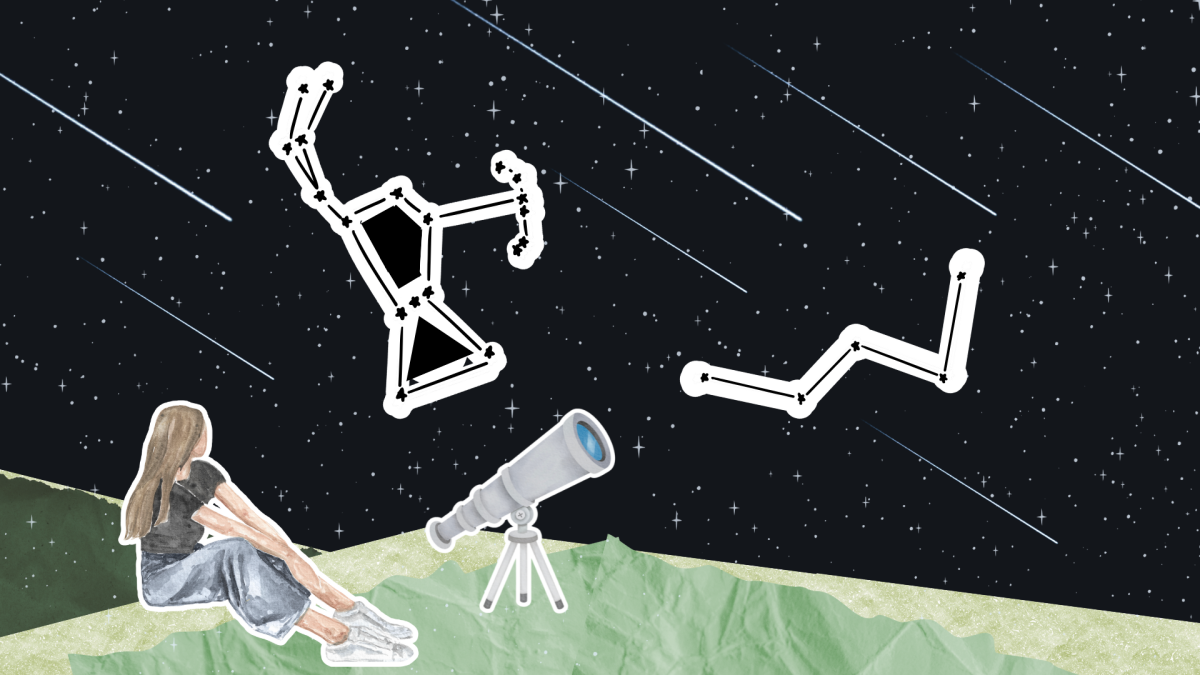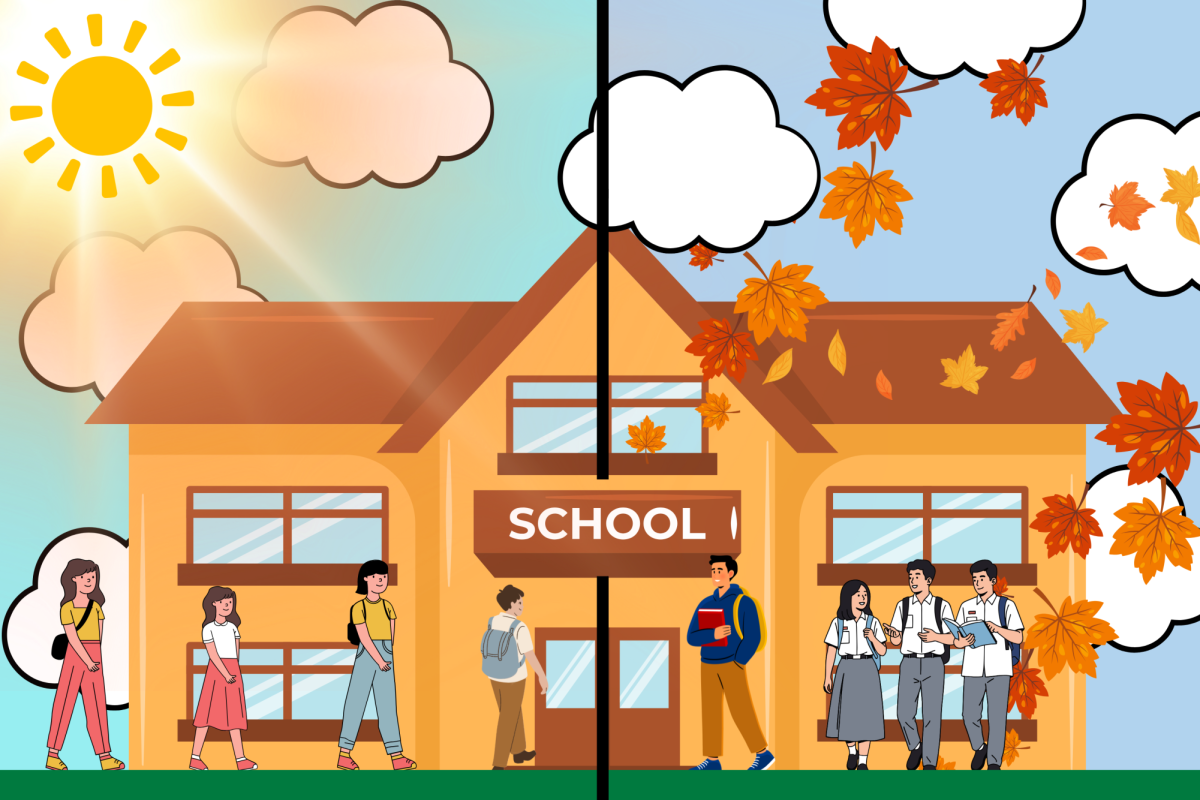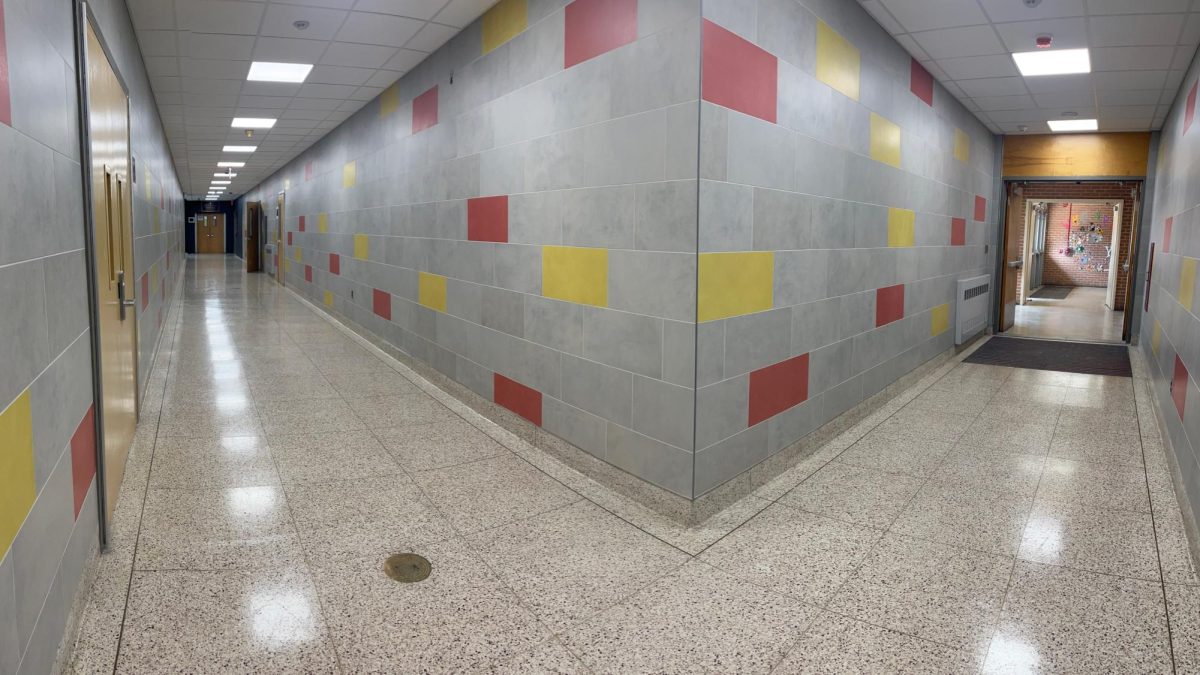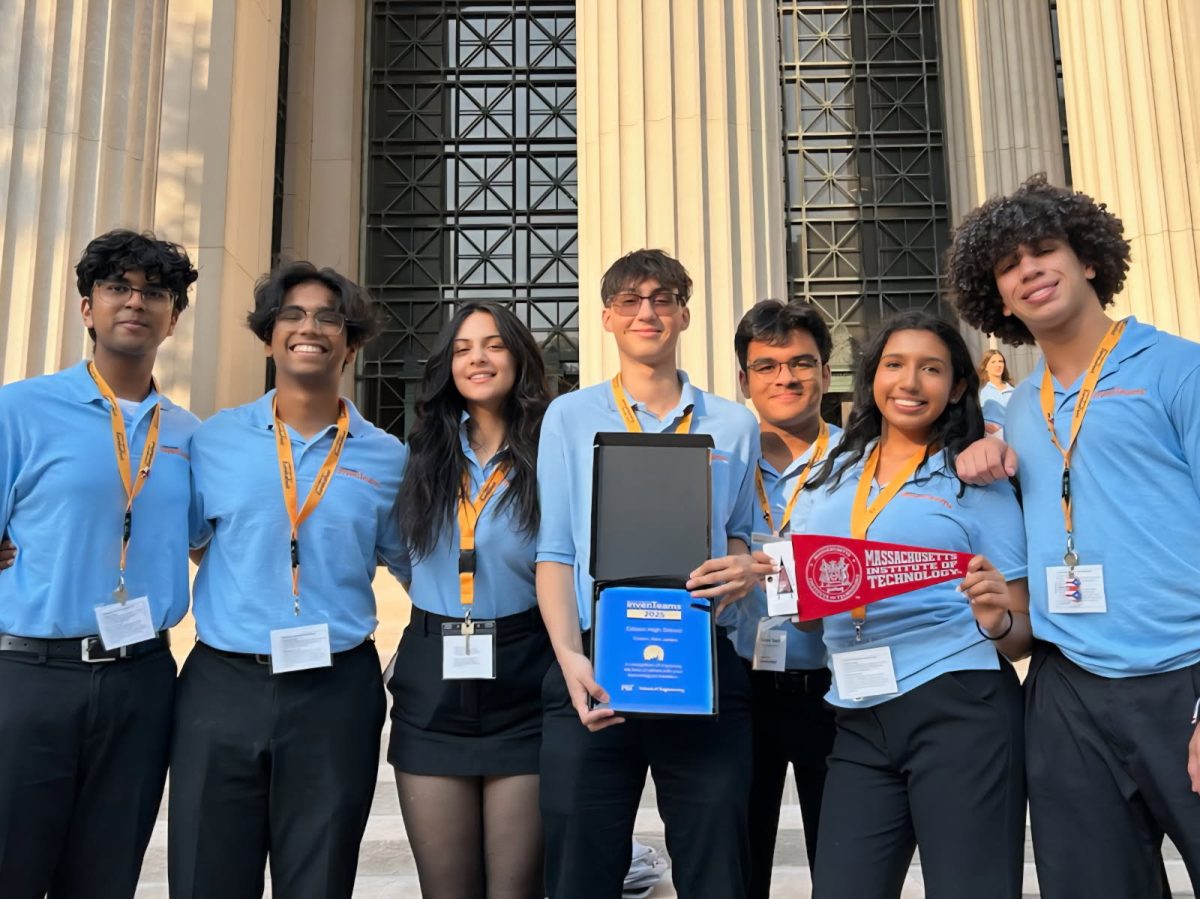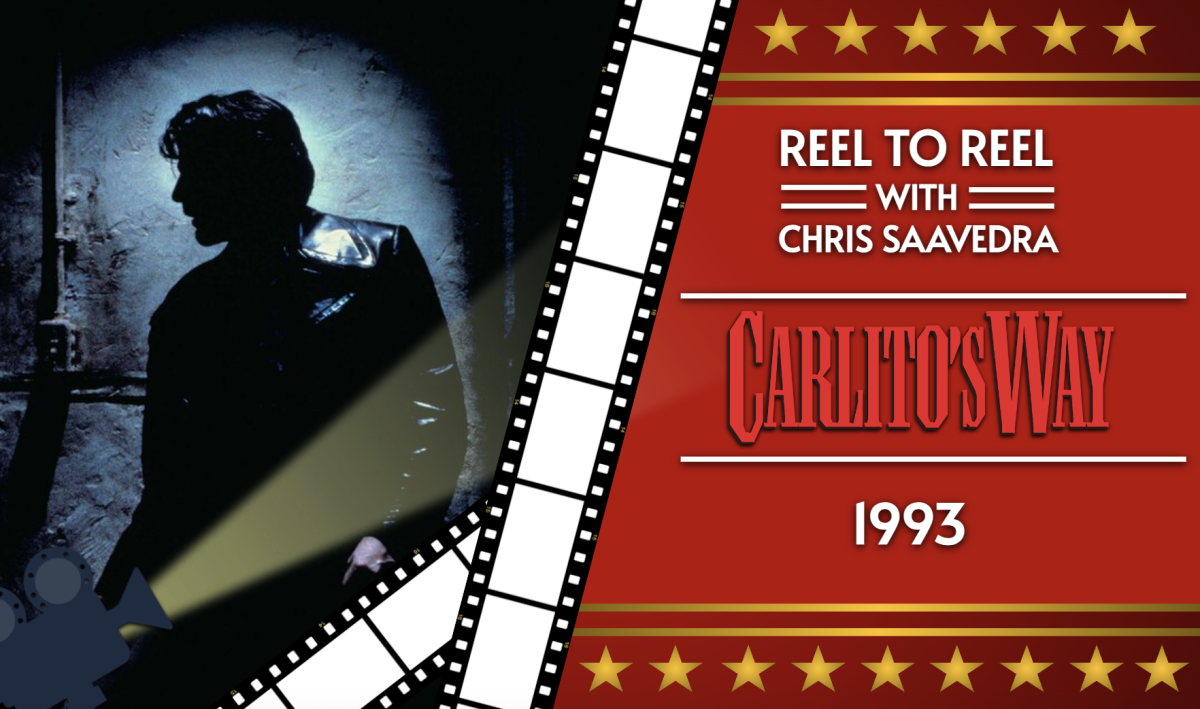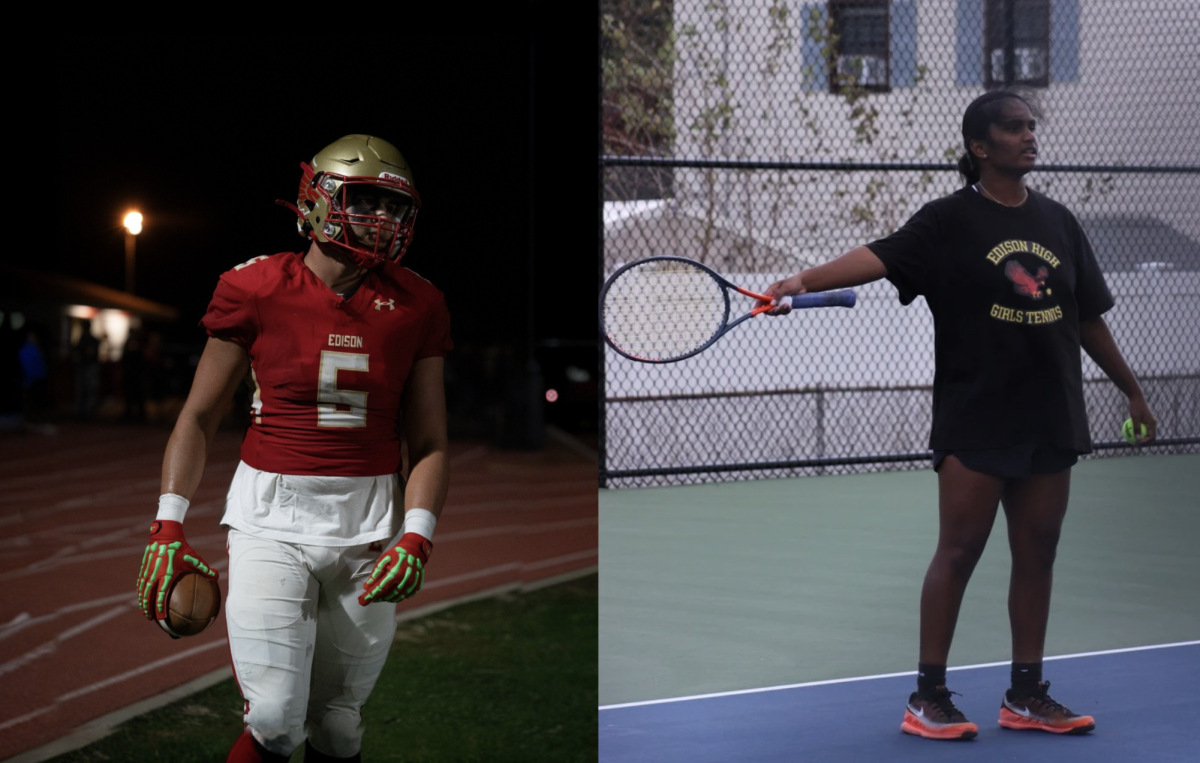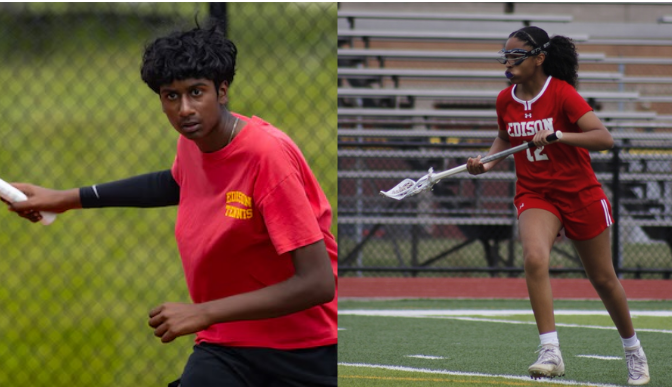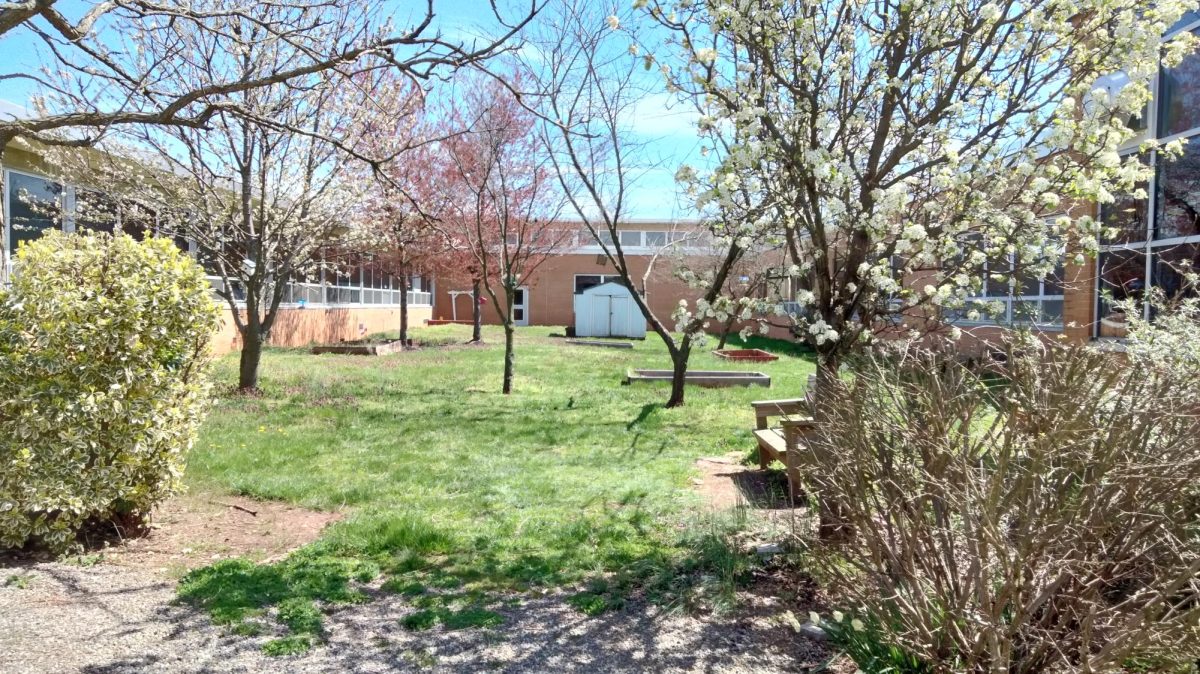Accessible through the breezeway lies an outside area enclosed by the school building. This courtyard contains a shed and multiple beds for planting. Although it was one of the first added segments to EHS, it has stood the test of time. However, this has not stopped its plunge into irrelevancy.
The courtyard became a staple of Edison High School following the construction of the language wing. This area is an outdoor space, still confined within the school grounds. Beds were installed, with many plants, and animals were able to roam about the area.
“We have had a lot of different clubs and people taking over,” said Principal Mr. Charles Ross. “We’ve had students planting fruit trees, vegetables, feeding animals.”
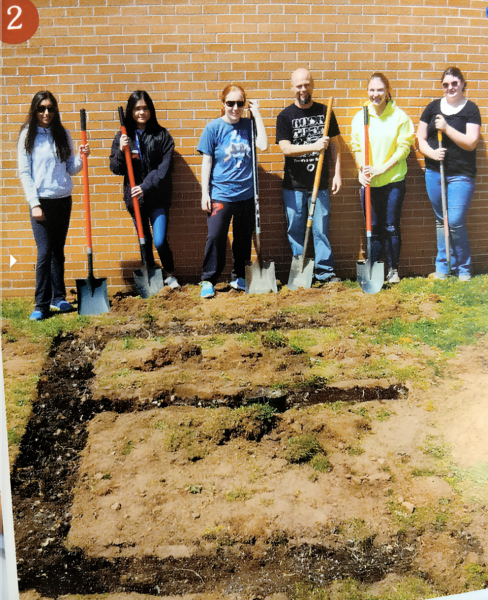
Mr. Anthony Barry, a former Science teacher, brought animals into Edison High, and Barry would take care of the greenhouse. Animals became a signature part of the greenhouse. Students were able to discover the animals through field trips to the greenhouse. The courtyard allowed the animals to be outside under school supervision.
“[The greenhouse] used to be like the Edison High zoo. There were turtles, there were tarantulas, there were fish, there were snakes,” said Mr. Fred Pollex, Integrated Science and AP Environmental Science teacher.
Furthermore, the courtyard had many plant-based operations. Many efforts would capitalize on the unique opportunities of an outdoor space, as both the ample sunlight and abundant soil provided a nice breeding ground for plants.
“We put in three of those raised beds on the other side, it could be used for flowers, it could be used for herbs, it could be used for flowers, it could be used for produce. You could use it for experiments, like testing out agriculture methods: the effect of changing irrigation system, fertilizers for farming,” said Pollex.
The yard would also allow students to partake in real world applications. Students were able to learn a great amount of biological and environmental concepts through studying plant and animal life. With the installed beds, students learned how to best plant crops. However, use of the courtyard paused following the onset of the COVID pandemic.
“When COVID hit, we were not permitted into the building, meaning no one could care for the animals. We decided to adopt all of them to good homes where they would get the love and care they needed,” said Biology Teacher Mr. Stanley Stellakis.

Barry had retired, transferring ownership of the greenhouse to Stellakis, who decided to make the greenhouse solely consist of plants. No club took up the mantle of caring for the courtyard until the Latin club recently decided to help out.”My students, when there wasn’t much activity, saw an opportunity. Since we daily saw this courtyard, that prompted Latin students to help out the courtyard. This follows Latin traditions, because Roman houses would often have villas which were used to garden,” said Latin Teacher Dr. Jonathan Clark.
The courtyard brings a nice change of scenery to the school in addition to its educational potential, but as with any school space, teachers believe there is no limit to its worth.
“Moving forward, I would love to see the courtyard used more by the student body… I hope that in the coming years we can expand its use and incorporate it more into our Biology and Environmental Science curricula,” said Stellakis.













